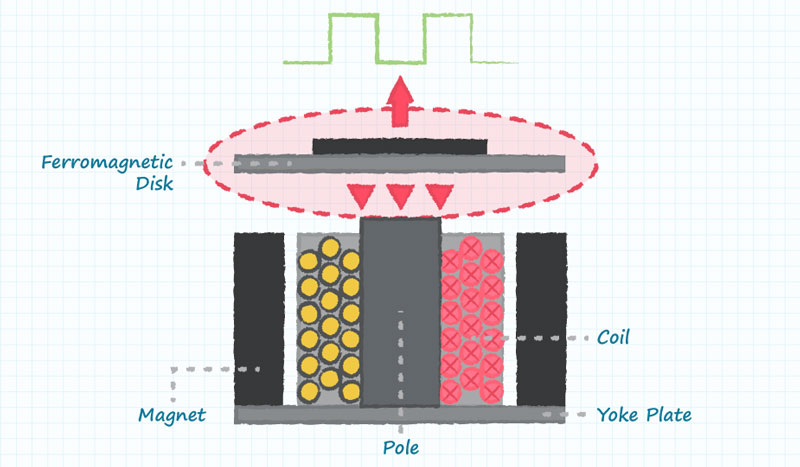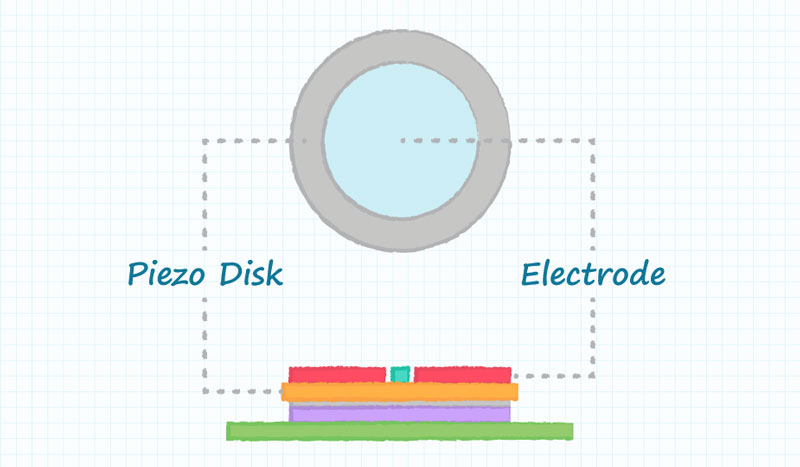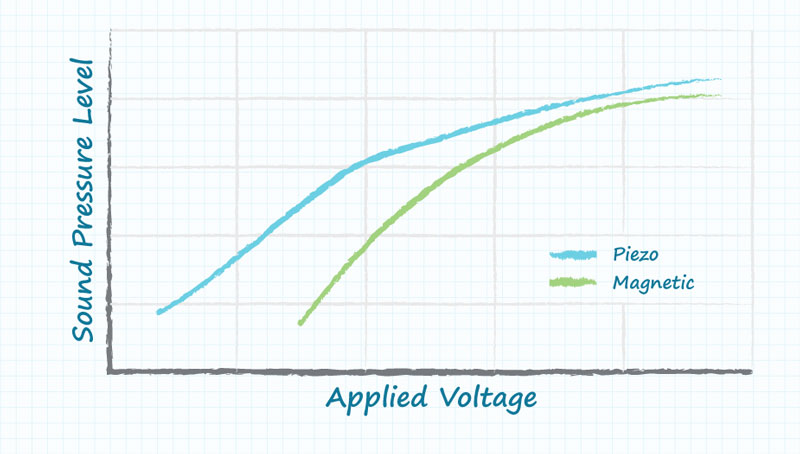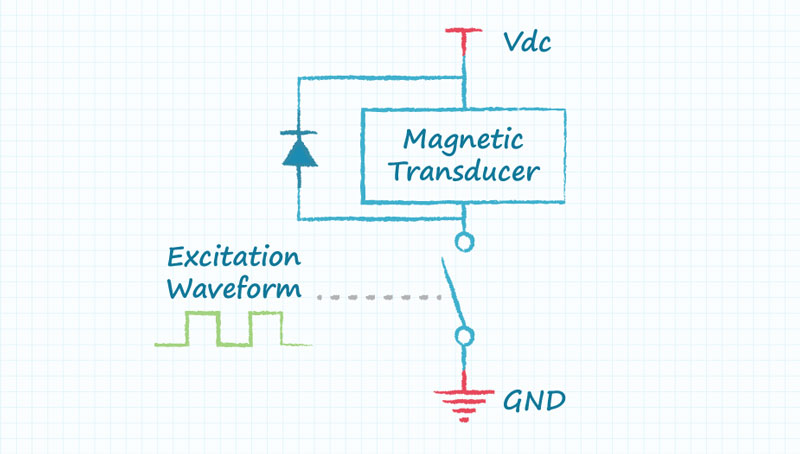Choosing the right buzzer - a review of key buzzer selection criteria
If you are designing products like a home appliance, security panel, a door-entry system or a computer peripheral, you might choose to feature a buzzer as the sole means of interacting with users or as part of a more sophisticated user interface.
By Bruce Rose, Principal Applications Engineer, CUI Devices
In either case, the buzzer can be an inexpensive and reliable means of acknowledging a command, indicating the status of equipment or a process, prompting interaction, or raising an alarm.
Fundamentally, a buzzer is usually either a magnetic or piezoelectric type. Your choice can depend on the characteristics of the drive signal, or the output audio power required and physical space available. You can also choose between indicator and transducer types, depending on the sounds you want and the circuit-design skills available to you.
Let us take a look at the principles behind the different mechanisms and then consider whether the magnetic or piezo type (and the choice of indicator or actuator) could be right for your project.
Magnetic buzzers
Magnetic buzzers are essentially current-driven devices, typically requiring more than 20mA to operate. The applied voltage can be as low as 1.5V or up to about 12V.
As figure 1 shows, the mechanism comprises a coil and a flexible ferromagnetic disk. When the current is passed through the coil, the disk is attracted towards the coil and returns to its normal position when the current is not flowing.
This deflection of the disk causes air in the vicinity to move, and this is interpreted as sound by the human ear. The current through the coil is determined by the applied voltage and the coil impedance.

Figure 1. Magnetic buzzer construction and operating principle.
Piezo buzzers
Figure 2 shows the elements of a piezo buzzer. A disk of piezoelectric material is supported at the edges in an enclosure and electrical contacts are fabricated on the two sides of the disk. A voltage applied across these electrodes causes the piezoelectric material to deform, resulting in the movement of air that can be detected as sound.
In contrast to the magnetic buzzer, the piezo buzzer is a voltage-driven device; the operating voltage is usually higher and may be between 12V and 220V, while the current is less than 20mA. The piezo buzzer is modeled as a capacitor, whereas the magnetic buzzer is modeled as a coil in series with a resistor.

Figure 2. Piezo buzzer construction.
For both types, the frequency of the resulting audible tone is determined by the frequency of the driving signal and can be controlled over a wide range. On the other hand, while piezo buzzers exhibit a reasonably linear relationship between the input signal strength and the output audio power, the audio power of magnetic buzzers fall sharply with diminishing signal strength.
The characteristics of the drive signal you have available can influence whether you choose a magnetic or piezo buzzer for your application. However, if loudness is a key requirement, piezo buzzers can typically produce a higher Sound Pressure Level (SPL) than magnetic buzzers but also tend to have a larger footprint.
Indicator or transducer
The decision of whether to choose an indicator or transducer type is guided by the range of sounds required and the design of the associated circuitry to drive and control the buzzer.
An indicator comes with driving circuitry built into the device. This simplifies circuit design (figure 3), enabling a plug-and-play approach, in exchange for reduced flexibility. While you only need to apply a dc voltage, one can only get a continuous or pulsed audio signal since the frequency is fixed internally. This means that multi-frequency sounds such as sirens or chimes are not possible with indicator buzzers.

Figure 3. An indicator buzzer produces sound when a dc voltage is applied.
With no driving circuitry built in, a transducer gives you the flexibility to achieve a variety of sounds using various frequencies or arbitrary waveshapes. In addition to basic continuous or pulsed sounds, you can generate sounds such as multi-tone warnings, sirens or chimes.
Figure 4 shows the application circuit for a magnetic transducer. The switch is typically a bipolar transistor or FET and is used to amplify the excitation waveform. Because of the coil’s inductance, the diode shown in the diagram is needed to clamp the flyback voltage when the transistor is turned off quickly.

Figure 4. A magnetic transducer requires an excitation signal, amplifier transistor and a diode to handle induced flyback voltage.
You can use a similar excitation circuit with a piezo transducer. Because the piezo transducer has low inductance, a diode is not required. However, the circuit needs a means of resetting the voltage when the switch is open, which can be done by adding a resistor in place of the diode, at the cost of higher power dissipation.
One can also increase the sound level by raising the peak-to-peak voltage applied across the transducer. If you use a full-bridge circuit as shown in figure 5, the applied voltage is twice as large as the available supply voltage, which gives you about 6dB higher output audio power.

Figure 5. Using a bridge circuit can double the voltage applied to the piezo transducer, giving 6 dB extra audio power.
Conclusion
Buzzers are simple and inexpensive, and the choices are limited to four basic categories: magnetic or piezoelectric, indicator or transducer. Magnetic buzzers can operate from lower voltages but require higher drive currents than piezo types. Piezo buzzers can produce a higher SPL but tend to have a larger footprint.
You can operate an indicator buzzer with only a dc voltage or choose a transducer for more sophisticated sounds if you are able to add the necessary external circuitry. Thankfully, CUI Devices offers a range of magnetic and piezo buzzers in either indicator or transducer types to make the selection of a buzzer for your design even easier.


